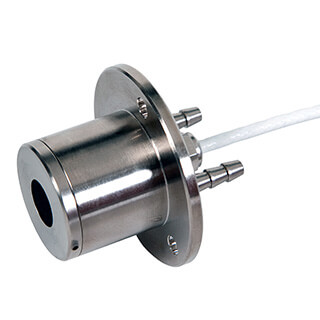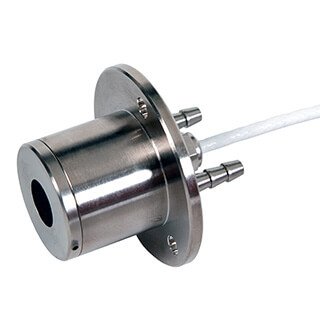Radiative heat flux through water droplets
In July 2017 Mr. Dalibor Balner and Ms. Karla Barcova conducted a study and wrote the article: “Attenuation of thermal radiation through water mist”. The article was then published by the ‘American Institute of Chemical Engineers Journal’ or AIChE. The reason for this study was finding out how much radiative heat is attenuated by a curtain of water droplets, or a layer of water mist. To measure the radiative heat flux passing through the water curtain, the Hukseflux SBG01 heat flux sensor was used.
Thermal radiation and water
Water droplets can absorb and scatter thermal radiation. This is a useful property and is widely used in protection against thermal radiation by fire fighters. Optimizing the attenuation of thermal radiation requires knowing the specific parameters of the water curtain that should be used.
Nozzle characteristics
To find out what type of water curtain works best for attenuating thermal radiation, 5 different nozzles were tested. The nozzles, fastened on a water flow through a pipe, used orifices of 100, 150, 200, 300 and 500 micrometers. Varying the exiting diameter results in droplets with different diameters and curtains with different mass concentrations. These properties influence the attenuation of thermal radiation.
The smallest orifice nozzle, a diameter of 100 micrometers, has the property of dispersing the water into very small droplets. Small droplets have more surface relative to their mass and thus reflect more radiation. The biggest orifice nozzle, a diameter of 500 micrometers, creates the biggest droplets. The advantage of this type of nozzle is that it is capable of handling a bigger flow rate and thus can use more water to attenuate the radiation.

How was the SBG01 heat flux sensor used?
To determine the exact distances and positions between all the apparatus, certain things had to be accounted for.
For instance, the radiation must not pass outside the water curtain when using smaller orifice nozzles. Water should not fall on the SBG01 heat flux sensor when using larger orifice nozzles and at the same sufficient heat flux had to be provided.
Figure 1 depicts the setup of the experiments done for optimizing different types of nozzles in relation to radiation attenuation.

Conclusion
After testing and analyzing the results of the different nozzles, it became clear that the attenuated radiation is proportional to the initial radiation. The water curtain attenuates a percentage of the initial radiation rather than a fixed quantity.
Furthermore, there was a clear pattern that the bigger the nozzle was, the more radiation was attenuated. This was due to the higher flow rate, but also because the bigger nozzles created a wider water curtain.
The SBG01 heat flux sensor proved itself to be consistent, reliable and accurate throughout the experiments.
Original article: “Attenuation of thermal radiation through water mist”








